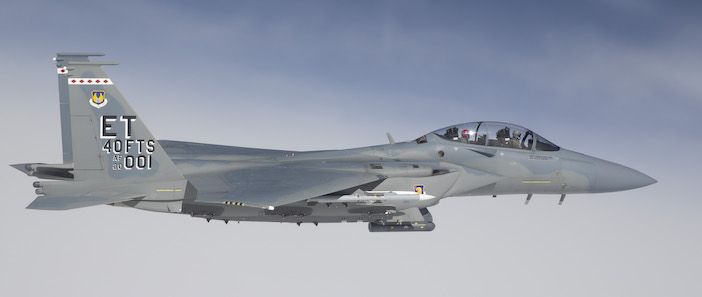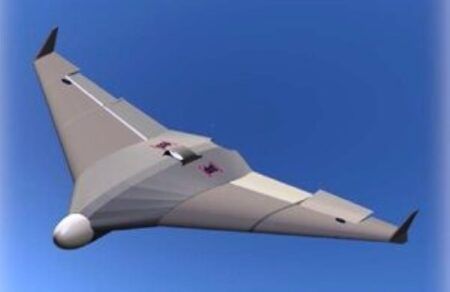The US Air Force’s latest fighter jet, the F-15EX has successfully fired a weapon for the first time during flight testing over the Gulf of Mexico.
The flight testing last month by the US Air Force’s (USAF) 40th Flight Test Squadron fired an AIM-120D missile last month over the Gulf of Mexico against a BQM-167 aerial target drone as part of the 53rd Wing’s Combat Archer, an air-to-air weapons system evaluation program.
The F-15EX Eagle II is a two-seat fighter being made by Boeing that will replace the oldest F-15C/Ds in the USAF. Last July the US Air Force awarded Boeing a contract to build eight jets and future plans call for up to 144 F-15EXs to be built.
During last month’s test flight, the F-15EX detected the drone using onboard sensors, acquired a weapons-quality track and launched the missile at the target. After tracking the missile’s release and flight toward the BQM-167, the shot was determined a WSEP success, at which point the missile flight was terminated.
The successful release marked followed more than six months of integrated developmental and operational flight testing for the shot.
Colton Myers, F-15EX test project manager with the USAF’s operational Flight Program Combined Test Force said, “This was an end-to-end verification of the entire weapons system, which will pave the way for more complex missile shots in the future.”
The F-15EX made its maiden flight in February last year.
“The fact that both aircraft were able to turn around from a streamlined acceptance period and immediately deploy to a major exercise is a testament to the maturity of this platform, as well as the expertise of the combined test team as a whole,” Myers said.
Following the deployment, the F-15EX underwent developmental flight and ground testing to include survivability testing in various electromagnetic environments. This series of tests lead to the discovery of and resolution of issues identified in the F-15EX’s Suite 9 software system, leading to a more mature and stable product, according to Myers.
“For a new platform, we’ve made an incredible amount of progress in a short period of time,” Myers said. “I don’t know of any other platform that has undergone such a rapid test program and it’s been incredible to be a part of the team that’s bringing this to reality.”
After the developmental testing, more operational testing of the F-15EX was conducted in October. The aircraft deployed to Nellis Air Force Base, Nevada for another exercise focused on the air-to-air dominance mantle it will inherit from the F-15C. This exercise proved that while the platform still needs more development, it is completely capable of fulfilling its expected air dominance role, according to Myers.
Myers said the advancement of the program and the F-15EXs successes over the past 10 months are due to the integrated testing efforts by the 96th Test Wing and 53rd WG.
“The combined DT/OT [developmental testing and operational testing] strategy has been critical to our test success, allowing us to break the mold of ‘traditional’ testing, while ultimately resulting in an overall better product for the warfighter, and in a shorter timeline than if we adopted the traditional approach,” Myers said.





